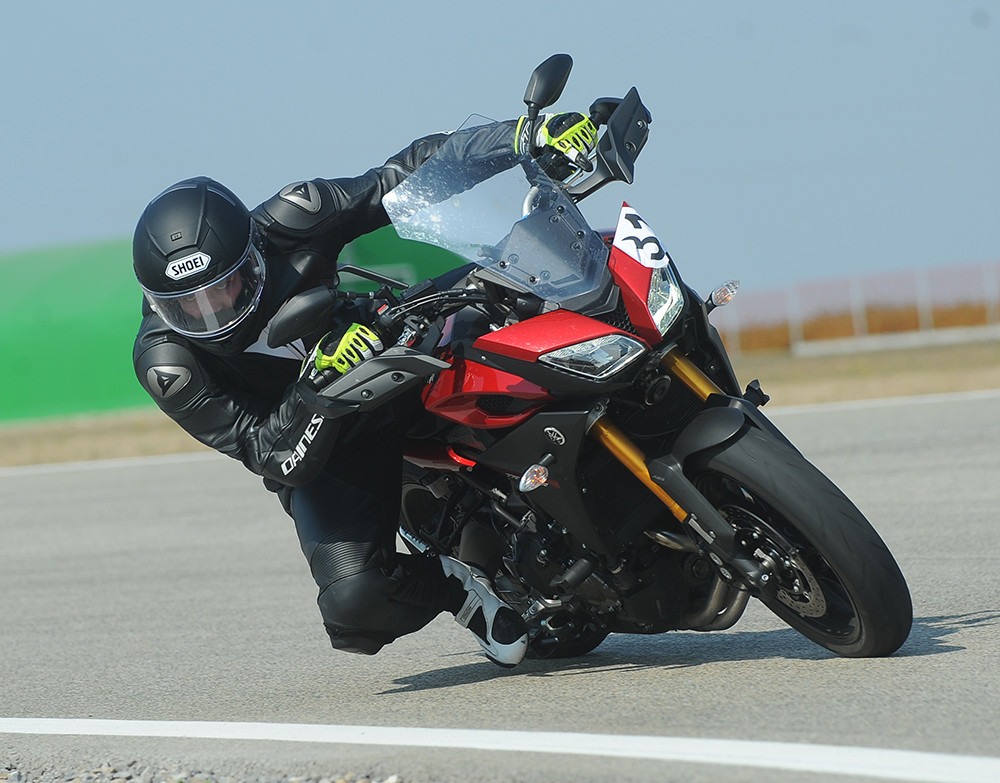Many track day enthusiasts and riders are accustomed to sports bikes, renowned for their track-focused design. However, the question often arises: how do body positioning techniques translate when you’re riding a naked bike on the track? If you’re considering taking your roadster, streetfighter, or standard motorcycle to the track, understanding body position nuances is crucial. This guide explores how to adapt your riding style and leverage the unique ergonomics of a naked bike for optimal track performance.
Before diving into the specifics of naked bikes, let’s quickly reiterate the fundamental purpose of body position in performance motorcycle riding.
The Core Objectives of Body Position
Effective body position isn’t about showmanship; it’s about enhancing your control and riding experience. As previously discussed, the primary goals are threefold: exploring the importance of body position
- Offsetting Lean Angle: Shifting your body weight allows the bike to remain more upright, improving tire contact and stability, especially during aggressive cornering.
- Maintaining Relaxed Arms: Proper body positioning reduces strain on your arms and wrists, crucial for precise control inputs and endurance during demanding track sessions.
- Enhancing Comfort and Endurance: A comfortable riding posture allows you to focus better, react quicker, and maintain peak performance for longer periods on the track.
These core principles remain consistent regardless of your bike type. Now, let’s examine how body position adapts when you’re riding a naked bike on the track.
Lower Body Engagement on a Naked Motorcycle
The lower body’s primary role in cornering is to establish a stable foundation. This solid base allows your upper body to move freely, manage the controls effectively, and maintain a relaxed grip on the handlebars throughout turns.
On a sports bike, the seat, footpegs, and fuel tank serve as the critical contact points for creating this foundation. The good news is that these same contact points are present on a naked bike. Therefore, the fundamental techniques for lower body positioning remain largely unchanged. The crucial element is the effectiveness of your outside leg’s grip against the tank.
 Outside leg firmly against the tank for stability during cornering on a naked bike
Outside leg firmly against the tank for stability during cornering on a naked bike
The design of the footpegs and the tank’s shape will dictate how effectively you can establish this anchor point. Fortunately, most naked bikes intended for spirited riding or track use are designed to allow for solid lower body engagement.
In essence, your lower body positioning goals on a naked bike remain the same as on a sports bike. You should aim for similar positions and engagement, and most track-capable naked bikes will facilitate this effectively.
Upper Body Adaptations on a Roadster
With a stable lower body foundation, the next step is to position your upper body to the inside of the turn, moving your head forward and slightly downward. This technique ensures your inside arm remains bent and relaxed, a fundamental principle for all performance riding, regardless of motorcycle style.
 Rider demonstrating proper upper body position on an adventure bike, highlighting universal principles
Rider demonstrating proper upper body position on an adventure bike, highlighting universal principles
The fundamental objective of upper body positioning – shifting your weight to reduce lean angle and lowering your center of gravity for enhanced control and smoother bike movement – remains consistent even with the more upright riding posture of a naked bike.
However, the higher handlebar position inherent in naked bike ergonomics introduces two key changes:
Firstly, you may find yourself naturally less inclined to crouch as low as you might on a sports bike. The higher bars are easily within reach, promoting a more comfortable and less strained riding posture. If achieving a low tuck on a sports bike feels challenging, you’ll likely find the naked bike position more accommodating.
Secondly, naked bikes often exhibit lighter steering feel compared to sports bikes (assuming similar geometry). The higher handlebar position encourages a more direct pushing input on the bars, rather than pressing down on them, as is common with sports bike riders.
When your forearms are closer to parallel with the ground, steering inputs become more direct and efficient. This facilitates easier counter-steering and makes the bike feel more responsive to directional changes, requiring less effort to initiate turns.
Furthermore, many naked bikes feature wider handlebars. This increased leverage further enhances steering ease and responsiveness.
No Disadvantage, Just Different Strengths
Sports bikes are meticulously engineered for peak track performance, and their geometry and ergonomics offer undeniable advantages in specific scenarios. However, if your track day goals revolve around personal improvement and enjoying the ride, rather than chasing lap records on a Ducati Panigale, a road-going Triumph Street Triple, KTM Super Duke, or Ducati Monster, among others, can be incredibly rewarding.
From a fundamental riding perspective, you are not inherently disadvantaged by choosing a naked bike for the track. In fact, the more relaxed ergonomics of a naked bike might actually accelerate your progress. As emphasized earlier, rider comfort and relaxation are paramount for speed and control. Achieving these states might be more readily attainable for some riders on a less aggressively positioned machine.
Ultimately, body position principles don’t drastically change when transitioning from a sports bike to a naked bike for track riding. They simply manifest slightly differently, often leveraging the inherent comfort and agile handling of naked motorcycles. Embrace the nuances of your “Naked On Bike” track experience and focus on refining your fundamental skills.
